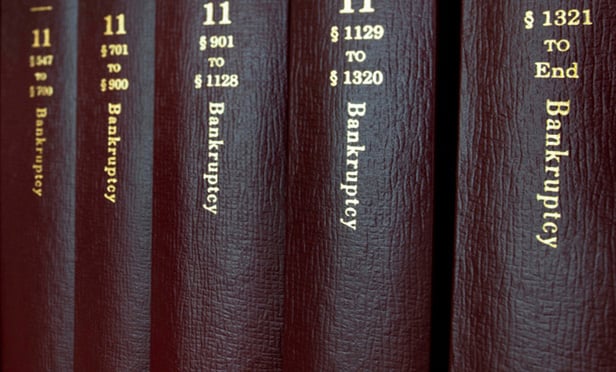Features

How §365(n) Can Help Licensees When Licensors File for Bankruptcy
This article seeks to explain the scope of §365(n), then touches upon steps that intellectual property licensees can take to minimize the loss of the use of their licenses, such as those involving copyrights in entertainment content, in the event a licensor files for bankruptcy.
Features

Miramax's NFT Suit Over Pulp Fiction
The Miramax film and tv studio, and its lawyers at Proskauer Rose, shook up both the IP and blockchain communities recently when Miramax sued to block film director Quentin Tarantino from selling non-fungible tokens (NFTs) of memorabilia from his 1994 blockbuster movie Pulp Fiction.
Features

Challenges In Being a Pro Sports General Counsel
Being a general counsel for a professional sports team is a coveted gig, but it's also a job with unique challenges, potential ethical minefields and scandals lurking around the front office, field, stadium and elsewhere.
Columns & Departments
Bit Parts
N.Y. Appellate Division Affirms Denial of Motion To Dismiss Personal Manager's Lawsuit Against Management Attorney Playboy Gets Preliminary Injunction Against Counterfeit NFTs Seller
Features

Johnny Cash Museum Case Includes Attorney Conflict of Interest Issue
How does "eye of the beholder" apply to law clients for determining whether an attorney is representing more than one party to a negotiation? And how would attorney/client privilege work in such a situation? These issues have been raised in litigation involving sponsorship agreements for the Johnny Cash Museum in Nashville.
Features

Recent Court Rulings on 'Embedding' Foreshadow Split In Circuits
When and how can someone else's visual content be displayed on a website without the website operator running afoul of copyright law? When and how can someone else display the website operator's visual content? A recent ruling on a popular practice at the center of these issues for entertainment and media companies may upend the current paradigm.
Features

Consultants Lose Bid for Percentage of Record Label
A successful Atlanta-based hip-hop and R&B label beat back the efforts of a Los Angeles consulting firm to lay claim to hundreds of thousands of dollars and a large chunk of the company itself, when a jury declared that the record company owed the consultants less than $3,500.
Columns & Departments
Players on the Move
A look at moves among attorneys, law firms, companies and other players in entertainment law.
Need Help?
- Prefer an IP authenticated environment? Request a transition or call 800-756-8993.
- Need other assistance? email Customer Service or call 1-877-256-2472.
MOST POPULAR STORIES
- The DOJ's New Parameters for Evaluating Corporate Compliance ProgramsThe parameters set forth in the DOJ's memorandum have implications not only for the government's evaluation of compliance programs in the context of criminal charging decisions, but also for how defense counsel structure their conference-room advocacy seeking declinations or lesser sanctions in both criminal and civil investigations.Read More ›
- Bankruptcy Sales: Finding a Diamond In the RoughThere is no efficient market for the sale of bankruptcy assets. Inefficient markets yield a transactional drag, potentially dampening the ability of debtors and trustees to maximize value for creditors. This article identifies ways in which investors may more easily discover bankruptcy asset sales.Read More ›
- The DOJ's Corporate Enforcement Policy: One Year LaterThe DOJ's Criminal Division issued three declinations since the issuance of the revised CEP a year ago. Review of these cases gives insight into DOJ's implementation of the new policy in practice.Read More ›
- Use of Deferred Prosecution Agreements In White Collar InvestigationsThis article discusses the practical and policy reasons for the use of DPAs and NPAs in white-collar criminal investigations, and considers the NDAA's new reporting provision and its relationship with other efforts to enhance transparency in DOJ decision-making.Read More ›
- The DOJ's Latest Opioid Crime-Fighting Tool: The Civil False Claims Act<b><i>The U.S. Department of Justice Is Now Using The False Claims Act — Traditionally a Civil Enforcement Tool — to Combat the United States' Sweeping Opioid Epidemic</b></i><p>The use of the FCA is part of a larger DOJ strategy to develop multi-faceted solutions for this public health emergency.Read More ›
